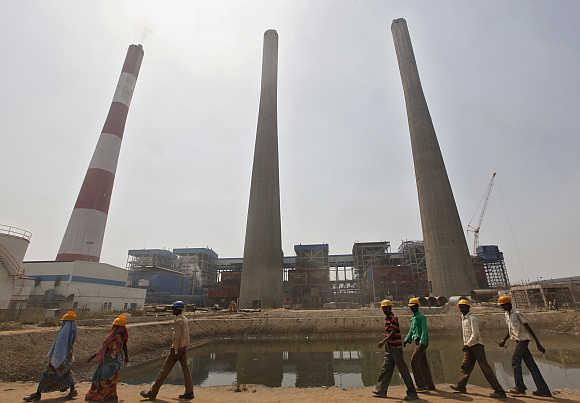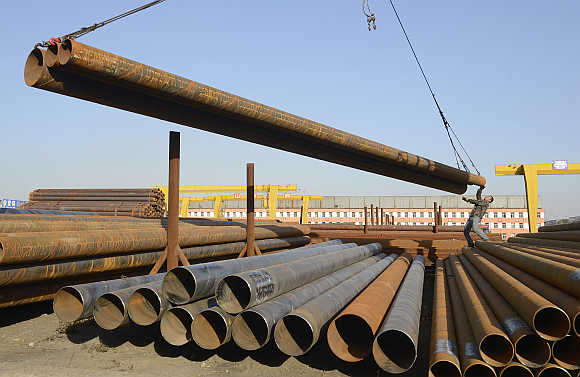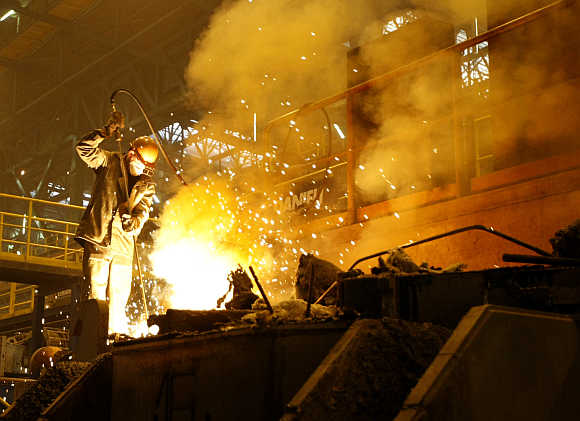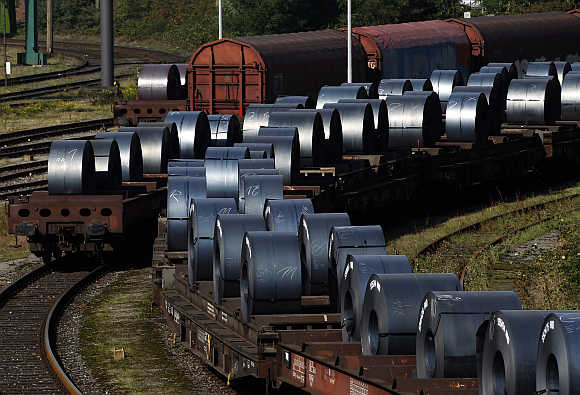 | « Back to article | Print this article |
End of the era of mega profits for Jindal Power?
When the initial public offer of Jindal Power was announced in 2009, it was seen by investors as a golden opportunity to own a quality stock. Jindal Power was dishing out profit, year after year, substantially boosting the earnings of its parent, Jindal Steel and Power.
But, the market could never play host to its IPO. After pushing it back several times, the company has now shelved the plan for a share float and remains non-committal on its revival. Have the recent changes in the regulatory environment and the problems associated with coal blocks taken the sheen off its IPO?
Click NEXT to read more...
End of the era of mega profits for Jindal Power?
JSPL has in the past pointed to unfavourable market conditions for the delay. But, the company's hesitation might also point towards some of its recent financial struggles. In the absence of long -term power purchase agreements, Jindal Power has been exposed to the vagaries of the market as it has to sell power in the open market.
JSPL's second-quarter results announced last month showed a muted growth in consolidated earnings, as tariffs dropped 14 per cent on a quarter-on-quarter basis due to lower demand as a result of the economic slowdown.
The company's future earnings have also been revised. A November report from brokerage Edelweiss Research has lowered the power tariff assumption for both FY13 and FY14 earnings to Rs 3.25 from Rs 3.5.
Click NEXT to read more...
End of the era of mega profits for Jindal Power?
The management expects merchant tariffs to stabilise between Rs 3.5 and Rs 4 per unit for the rest of the year, thus ruling out the possibility of an increase in earnings in the next quarter.
What went wrong with the company? Jindal Power, under Naveen Jindal, was the first company to take advantage of the merchant power tariffs. It commissioned its 1,000-Mw Tamnar power plant in record time.
With coal blocks just 10 km away, it could generate power at rates as low as Rs 0.80 per kilowatt hour, shooting up JSPL's return profile from 27 per cent in 2006-07 to 42 per cent in 2009-10.
Click NEXT to read more...
End of the era of mega profits for Jindal Power?
As JSPL realised the potential of its cash cow, it decided to hive it off and list it on the stock exchange. After announcing an IPO of Rs 10,000 crore (Rs 100 billion) in 2009, the company finally filed a prospectus to raise Rs 7,200 crore (Rs 72 billion) in late 2009 - the third-largest IPO ever in India after those of Coal India and Reliance Power. But, the IPO is yet to happen.
To boost its growth, JPL last year tried to grow inorganically - buying ready-made power plants. The company put up advertisements in major newspapers, seeking sellers. But, nothing came out of that either.
Click NEXT to read more...
End of the era of mega profits for Jindal Power?
ICICI Securities, in a report on JSPL, said: "While Jindal Power has been the key reason for JSPL's overall earnings since 2007-08, this is increasingly being clouded by impending policy action on merchant power prices, as well as return-dilutive projects like Tamnar II, where the availability of linkage coal remains key to the project's financial viability."
The report raised concerns on the prospects of JPL, as the coal blocks for its Dumka and Godda power projects in Jharkhand have been named in the Comptroller and Auditor General's report on coal block allocation.
Following the success of the 1,000-Mw Tamnar power plant, which generated annual cash flows of Rs 1,300 crore (Rs 13 billion) in its first year of operations, the company quickly announced another 2,400 Mw plant at the same site besides a 1,980-Mw thermal power plant in Jharkhand and a Rs 43,000-crore (Rs 430 billion) hydropower plant in Arunachal Pradesh.
Click NEXT to read more...
End of the era of mega profits for Jindal Power?
The future of these projects in the wake of the recent developments looks uncertain. The company has coal linkage for only half of Tamnar II, which is expected to be ready by 2013-14, and, given the recent CAG report, analysts say it is unlikely that Jindal Power will get more allocation anytime soon.
The future of its 1,980-Mw Dumka and Godda power plants also appears hazy. The plants were being planned to support JSPL's proposed steel plant in Jharkhand. Jindal Power had entered into a long-term purchase agreement to sell 51 per cent of power to JSPL. But, the plant is nowhere in sight.
Click NEXT to read more...
End of the era of mega profits for Jindal Power?
JPL, in its share sale prospectus in 2009, had left a provision for selling power to a third party in case its power plants commenced operations ahead of the steel plants. But, the progress on either of the projects has been tardy. There has been no investment in developing the coal blocks for the Dumka and Godda projects either.
A likely change in the government policy on merchant tariffs might also hit JPL's profits. Several reports suggest the government might look to cap the merchant power rates from power produced from captive coal blocks.
"The rationale behind this is the benefits of captive coal (in JSPL's case, Tamnar I) are not being passed onto the end-consumer. The valuation of JPL will thus suffer significantly if the merchant model with captive coal block is tinkered with," say analysts at ICICI.
Click NEXT to read more...
End of the era of mega profits for Jindal Power?
Amit Agarwal of Antique Stock Broking in a report dated 22 October said: "What seems to be the current worry is that JPL might be forced to sell power at regulated rates and its current merchant power model may not sustain."
Understandably so, the company is changing its strategy and signing long-term PPAs. JSPL recently signed a five-year PPA with the Tamil Nadu State Electricity Board for supply of 200 Mw at Rs 4.5 per unit and is looking for more such deals in Uttar Pradesh and Rajasthan.








